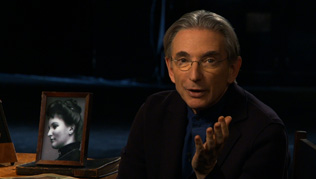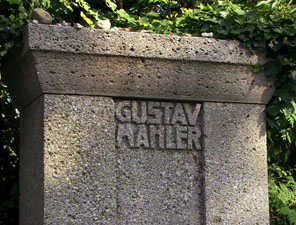Epilogue
Mahler in America
By Michael Tilson ThomasAlthough Mahler’s time in the United States was brief, he has had an enduring influence on American music and musical life. From his arrival, the most serious and forward looking musicians were aware of him and his compositions. Ives wrote in his Essays Before a Sonata that if, after Beethoven, there were any original possibilities left in symphonic form, Mahler would be the one to discover them. There is the legend that Mahler may have seen part of Ives’s 3rd Symphony through their mutual New York copyist Emil Hanke and it is also possible that Mahler may have been the missing link in Schoenberg’s early knowledge of Ives. It seems likely that, had he completed a few more New York seasons, many important musical confluences would have taken place.
Mahler performed a handful of American works in his New York programs, written by conservative, Eurocentric composers. But he wrote about the issues involved for American composers to find a recognizable national language. He recognized that folk music was a primal source of musical identity and that the challenge for America would be to form such a language from the diverse traditions of its many settlers. With characteristically undiplomatic candor, he criticized the idealizing or romanticizing of any one tradition such as Dvorak and his American followers had done with Native American or African American music. Mahler observed that the provocatively popular rhythms of emerging jazz were simplistic compared to folk musics of Eastern Europe.
The composer who first realized much of Mahler’s suggestion was Aaron Copland. Starting in the 1920’s Copland abstracted elements of Jewish, Black, Hispanic and other folk traditions into a tuneful and spacious tonal landscape in which many people heard echoes of their own traditions. The spaciousness in Copland’s music owes much to Mahler. Copland spoke often of Mahler’s music, especially the spare and slowly moving passages of the 9th and 10th Symphony and Das Lied von der Erde. There is a direct relationship between the gentle and “rangy” passages in the 10th, Copland’s Appalachian Spring and Bernstein’s Westside Story.
Listen
-
Mahler's Symphony No. 10
-
Copland's Appalachian Spring
-
Bernstein's West Side Story
 Play
Play
I first became aware of Mahler and his music growing up in Los Angeles in the 1950’s. There were many émigré artists who spoke of him with reverence. Powerful amongst them were Ernst Krenek and Otto Klemperer. Amongst the Hollywood studio musicians was the old bass player Hermann Reinshagen who had played under Mahler’s direction and shared with his students his somewhat resentful recognition of Mahler’s uncompromising standards.
In the 1960’s Bruno Walter was often in Los Angeles recording Mahler with the Columbia Symphony in the American Legion Hall on Highland Boulevard. Many students accompanied their teachers to these recording sessions and benefited from hearing the music rehearsed. Wherever I went as a youngster there were sophisticated musicians who made us aware of his work through then generally unavailable scores and privately circulated recordings. Later in Boston, I assisted William Steinberg who spoke in detail about Mahler and his world.
It was natural for young Americans of my generation to accept Mahler. We sensed in his work a similarity to the formal designs that we so admired in great film makers. Mahler so often presents epic themes contrasted with something small and human. He demands that the members of the orchestra take on the grotesque ironic accents of street musicians as well as the noble sounds of Beethoven. We sensed in this a prefiguring of the methods of Murnau, Lang, Renoir, Ganz, Eisenstein and later Fellini and Tarkovsky all of whom used actual street people to give their films depth of character. It’s the clangor of heroic marches, the vulnerable enchantment of distant serenades, and cries of pretzel vendors that give such scope and savor to Mahler’s music. We liked that.
Like Schubert, Mahler was obsessed with the music of the people around him. His symphonies are observations of how and why people of all social classes make the music they make. Essentially, Mahler achieved Schubert’s symphonic ambitions using Wagner’s methods. He achieved his ambition to make the symphony an entire world. Starting with Mahler’s world, many Americans worked backwards to the richness of the Austrian musical tradition from which he came. It has been a rewarding journey.
